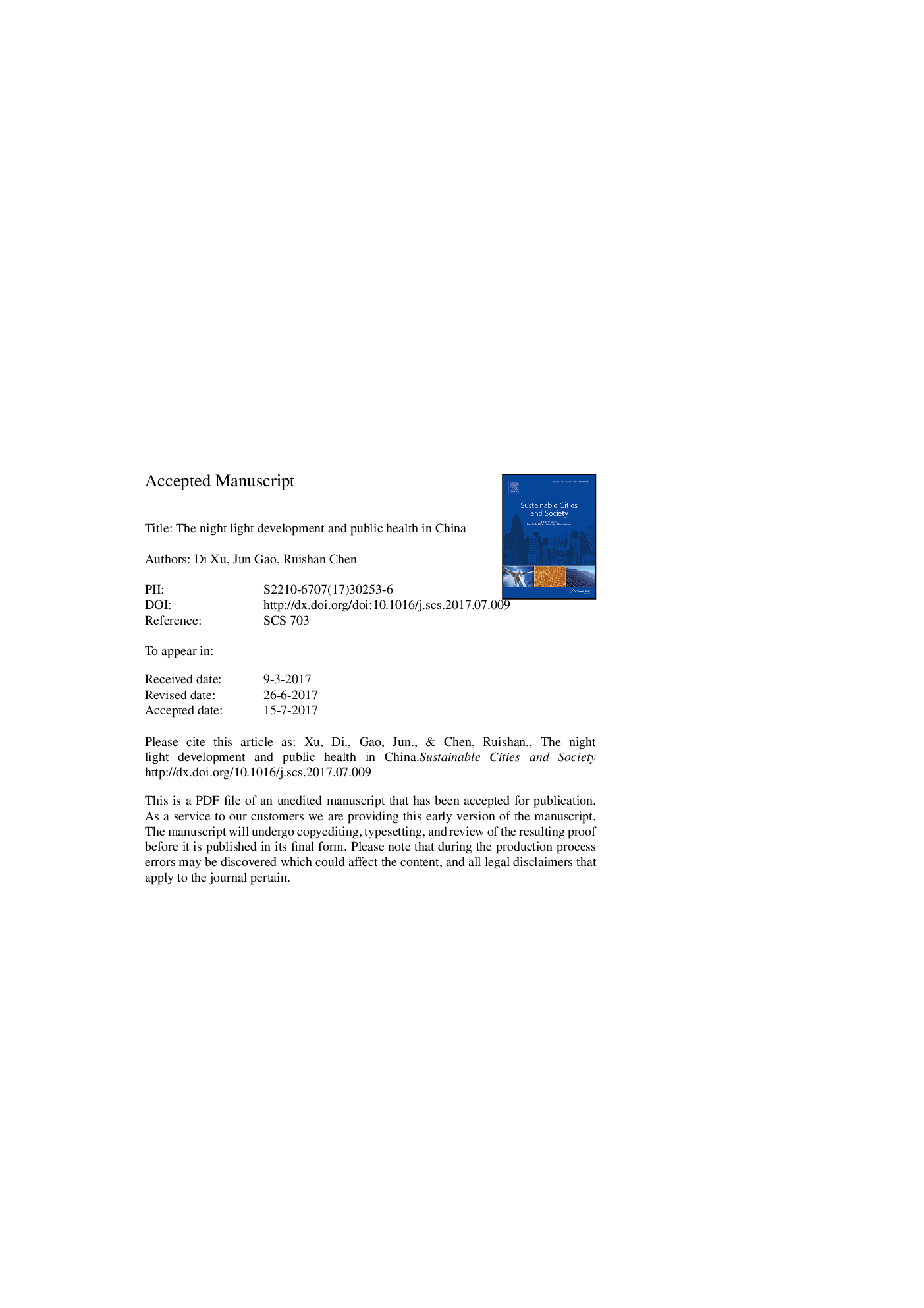| Article ID | Journal | Published Year | Pages | File Type |
|---|---|---|---|---|
| 4928079 | Sustainable Cities and Society | 2017 | 21 Pages |
Abstract
Quantifying the relationship between urbanization and public health is essential to understanding the impact of the urbanization process on environment and public health. However, there are few data linking features of cities to the public health. We apply a statistical frame to explore the feature of urbanization that affects public and environment health. Then the night light data are adopted to reveal the urbanization process in China from 1992 to 2012. The development of small cities dominated the process of urbanization in China from 1992 to 2002, and large, middle and small cities develop dominantly from 2002 to 2012. There is negative relation between the proportion of night light value above 5 and the birthrate and natural increase rates. The intensity of night light has a positive relation with health index for the elder population (age >60), cancer rate and land surface temperature, but urbanization reduces the positive relation between night light and cancer rate. There is no relation between night light intensity and mortality. The important factors of urbanization affect public health can be considered from social policy (inequality? economy, education, medical resources and insurance system) and the physical environment (air, water, soil, green space, waste, food safety and urban planning).
Related Topics
Physical Sciences and Engineering
Energy
Renewable Energy, Sustainability and the Environment
Authors
Di Xu, Jun Gao,
